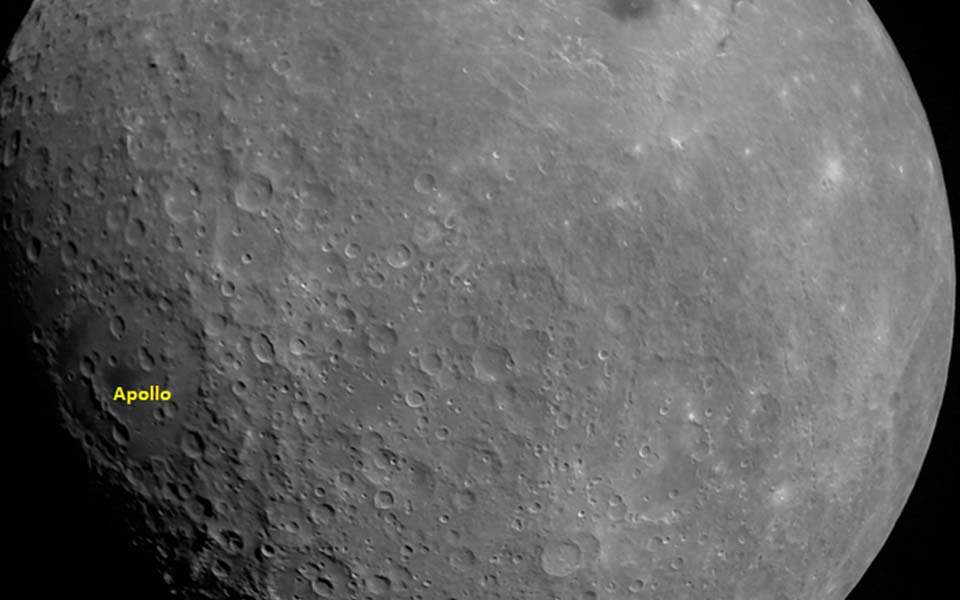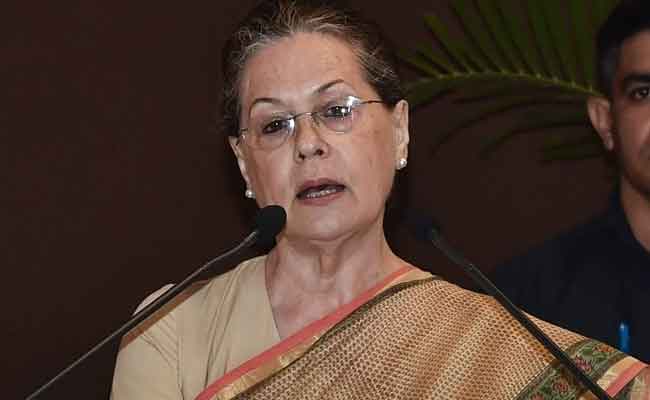Bengaluru, Sep 1: ISRO on Sunday said it has successfully performed the fifth and final lunar bound orbit manoeuvre for the Chandrayaan-2 spacecraft and was gearing up for separation of the lander from the orbiter on September 2.
All spacecraft parameters are normal, the Bengaluru headquartered space agency said after Sunday's manoeuvre on the spacecraft, that is currently in the lunar orbit for its rendezvous with the Moon.
"The final and fifth Lunar bound orbit manoeuvre for Chandrayaan-2 spacecraft was performed successfully today (September 01, 2019) beginning at 1821 hrs IST as planned, using the onboard propulsion system.
The duration of the manoeuvre was 52 seconds. The orbit achieved is 119 km x 127 km," the Indian Space Research Organisation said in an update.
It said the next operation is the separation of lander 'Vikram' from Chandrayaan-2 Orbiter, which is scheduled on September 2, 2019, between 1245 hrs and 1345 hrs (IST).
Following this, there would be two deorbit manoeuvres of lander 'Vikram' to prepare for its landing in the south polar region of the moon.
Vikram (with rover 'Pragyan' housed inside) is expected to touch down on the lunar surface on September 7, between 1.30 AM and 2.30 am.
ISRO said that after the lander's separation on Monday, two deorbit manoeuvres are scheduled for September 3 (9:00-10:00) and September 4 (3:00-4:00) respectively, before the powered decent on September 7.
ISRO Chairman K Sivan has said the proposed soft-landing on the Moon would be a "terrifying" moment as it is something ISRO has not done before, whereas the Lunar Orbit Insertion manoeuvre was successfully carried out during the Chandrayaan-1 mission.
In a major milestone for India's second Moon mission, the Chandrayaan-2 spacecraft had successfully entered the lunar orbit on August 20 by performing the LOI maneuver.
Chandrayaan-2 satellite began its journey towards the moon,leaving the earth's orbit in the dark hours on August 14, after a crucial manoeuvre called Trans Lunar Insertion (TLI) carried out by ISRO to place the spacecraft on "Lunar Transfer Trajectory".
India's Geosynchronous Satellite Launch Vehicle, GSLV MkIII-M1 had successfully launched the 3,840-kg Chandrayaan-2 spacecraft into the earth's orbit on July 22.
The spacecraft's health is being continuously monitored from the Mission Operations Complex at ISRO Telemetry,Tracking and Command Network in Bengaluru with support from Indian Deep Space Network antennas at Byalalu, near Bengaluru, the space agency has said.
Following the landing, the rover 'Pragyan' will roll out from lander 'Vikram' between 5:30-6:30 am on September 7 and carry out experiments on the lunar surface for a period of one lunar day, which is equal to 14 earth days.
The mission life of the lander is also one lunar day, while the orbiter will continue its mission for a year.
The orbiter carries eight scientific payloads for mapping the lunar surface and study the exosphere (outer atmosphere) of the Moon while the lander carries three scientific payloads to conduct surface and subsurface science experiments.
The rover carries two payloads to enhance the understanding of the lunar surface.
India's second lunar expedition would shed light on a completely unexplored section of the Moon, its South Polar region.
ISRO has said that the mission objective of Chandrayaan-2 is to develop and demonstrate the key technologies for end-to-end lunar mission capability, including soft-landing and roving on the lunar surface.
On the science front, the mission aims to further expand the knowledge about the moon through a detailed study of its topography, mineralogy, surface chemical composition, thermo-physical characteristics and atmosphere, leading to a better understanding of the origin and evolution of the moon, the space agency had said.
#ISRO
— ISRO (@isro) September 1, 2019
The final and fifth Lunar bound orbit maneuver for Chandrayaan-2 spacecraft was performed successfully today (September 01, 2019) at 1821 hrs IST.
For details please visit https://t.co/0gic3srJx3 pic.twitter.com/0Mlk4tbB3G
Let the Truth be known. If you read VB and like VB, please be a VB Supporter and Help us deliver the Truth to one and all.
United Nations (AP): Nearly 282 million people in 59 countries suffered from acute hunger in 2023, with war-torn Gaza as the territory with the largest number of people facing famine, according to the Global Report on Food Crises released on Wednesday.
The UN report said 24 million more people faced an acute lack of food than in 2022, due to the sharp deterioration in food security, especially in the Gaza Strip and Sudan. The number of nations with food crises that are monitored has also been expanded.
Máximo Torero, chief economist for the UN's Food and Agriculture Organisation, said 705,000 people in five countries are at Phase 5, the highest level, on a scale of hunger determined by international experts — the highest number since the global report began in 2016 and quadruple the number that year.
Over 80 per cent of those facing imminent famine — 577,000 people — were in Gaza, he said.
South Sudan, Burkina Faso, Somalia and Mali each host many thousands also facing catastrophic hunger.
According to the report's future outlook, around 1.1 million people in Gaza, where the Israel-Hamas war is now in its seventh month, and 79,000 in South Sudan are projected to be in Phase 5 and facing famine by July.
It said conflict will also continue to drive food insecurity in Haiti, where gangs control large portions of the capital.
Additionally, while the El Nino phenomenon peaked in early 2024, “its full impact on food security – including flooding and poor rain in parts of east Africa and drought in southern Africa, especially Malawi, Zambia and Zimbabwe – are like to manifest throughout the year.”
UN Secretary-General Antonio Guterres called the report “a roll call of human failings,” and that “in a world of plenty, children are starving to death.”
“The conflicts erupting over the past 12 months compound a dire global situation,” he wrote in the report's foreword.
Guterres highlighted the conflict in the Gaza Strip, as the enclave holds the highest number of people facing catastrophic hunger. There is also the year-old conflict in Sudan, which has created the world's largest internal displacement crisis “with atrocious impacts on hunger and nutrition,” he added.
According to the report, over 36 million people in 39 countries and territories are facing an acute hunger emergency, a step below the famine level in Phase 4, with more than a third in Sudan and Afghanistan. It's an increase of a million people from 2022, the report said.
Arif Husain, the UN World Food Program's chief economist, said every year since 2016 the numbers of people acutely food insecure have gone up, and they are now more than double the numbers before the COVID-19 pandemic.
While the report looks at 59 countries, he said the target is to get data from 73 countries where there are people who are acutely food insecure.
Secretary-General Guterres called for an urgent response to the report's findings that addresses the underlying causes of acute hunger and malnutrition while transforming the systems that supply food. Funding is also not keeping pace with the needs, he stressed.
“We must have the funding, and we also must have the access,” WFP's Husain said, stressing that both “go hand-in-hand” and are essential to tackle acute food insecurity.
The report is the flagship publication of the Food Security Information Network and is based on a collaboration of 16 partners including UN agencies, regional and multinational bodies, the European Union, the US Agency for International Development, technical organisations and others.





